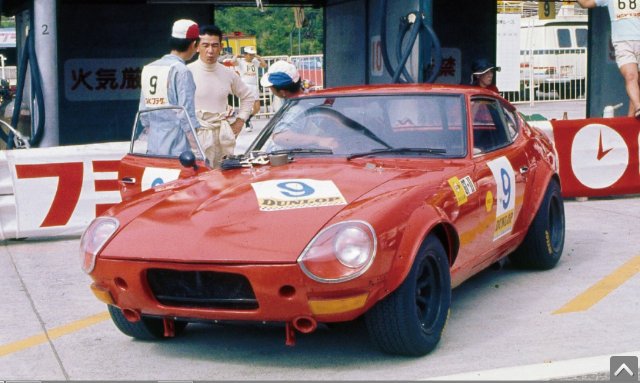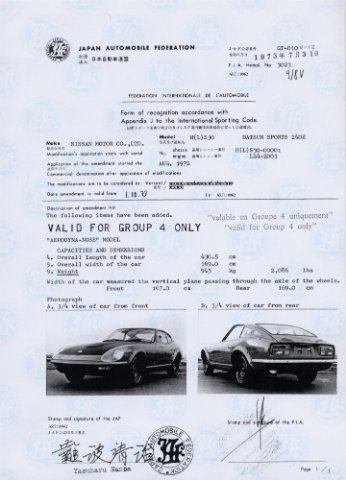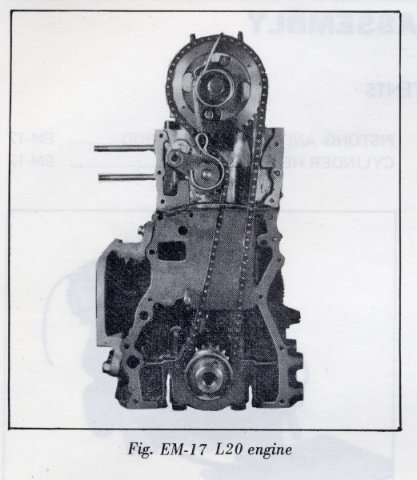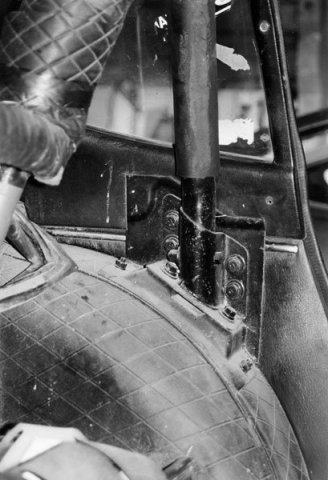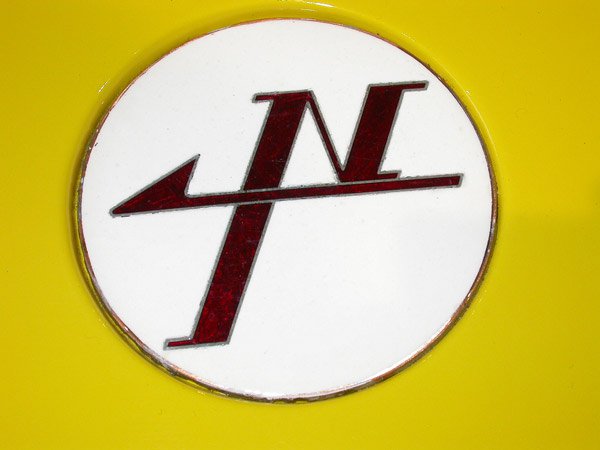-
Posts
551 -
Joined
-
Last visited
-
Days Won
8
Content Type
Profiles
Forums
Blogs
Events
Gallery
Downloads
Store
Everything posted by HS30-H
-
Usually because they don't know what it was designed to do. The device has been on the market for more than twenty years and they have sold thousands of them. There are plenty of satisfied users out there. I supplied and fitted one on an engine that went on to win a national championship series more than ten years ago. Mori san's given name is Shigeo. The 'Kameari' in the name of his company 'Kameari Engine Works' comes from their original location, which was in the Kameari district of Katsushika City in the metropolitan Tokyo area. They moved out to Yashio City in Saitama prefecture many years ago but kept the company name. The KEW Twin Idler has been discussed many, many times before here on HybridZ and elsewhere. You seem to have missed the main issue it was designed to address, which is variation in the relationship between the crankshaft and the camshaft in extremis, for example in rapid throttle-off where the camshaft could 'overtake' the crank and cause enough chain whip to allow valve/piston contact.
-
But seriously, I'm interested to hear your informed opinion on the full specification and details of the car, "...crap Nismo roll bar" and all. How old are you, Jon? Here's a photo of the car in question, racing in 1971. I'm guessing that you might not even have been born in 1971? Oh, and NISMO wasn't 'born' until 1984.
-
😗
-
Complete with dumb comments from people who don't know what they are looking at, eh Jon?
-
No, of course not. You're so funny. I have servants to do that kind of thing... (for best effect, read my posts aloud in Stewie Griffin's voice)
-
No, I'm here because you name-checked me after somebody used my scans & photos in the topic. "Bullshit". Noted. No surprise, but noted. "We shouldn't... " also noted. I think the word you are looking for is "I". "That British English" LOL. How quaint. How colonial. I'm using English. My native tongue. You cite Merriam-Webster, an American dictionary. This is... typical. Critique isn't necessarily negative in the English language. And please, Nissan. I'm usually talking about the company which made this stuff. Not a badge that was affixed to their product. No, really. You do. You're far too personal with all this. Give your head a wobble, have a glass of water or brush your teeth. To wit: Parts like the 'BRE' spoiler? You don't know enough about them to go anywhere near that far, but you go there because you don't like the messenger. You'll hate them because you think I love them, right? Freud had a theory about all that. Really, you need to step back from the keyboard and cool your heels a little. You invoked my presence here by citing my name with a slight (go back, remind yourself). I had my tongue firmly pressed in my cheek initially, but you just can't help yourself can you? Sow the wind, reap the whirlwind...
-
Oh, and - come on - don't be lazy. You didn't criticise the car in the pretty picture I posted. There must be a whole bunch of cardinal rules the damn fools didn't even know they were breaking. Killjoy.
-
The OP is asking about putting a 'BRE' rear spoiler on his 280Z. And ".....This will be a street car with a few passes at the dragstrip per year." I don't think we are at the "modern aero" stage quite yet... I was talking about critique. You are talking - automatically, it seems - about criticism. Quite different. I have no problem with pointing at negative aspects, but - as I was trying to get across - it would be wise not to judge decisions taken 50+ years ago without taking into account the full circumstances surrounding them (as you did with the ZG overfenders homologation recently). I don't know why you find that so problematic? Hey, hagiographic pedantry is a dying art. Somebody needs to keep it going. And that would be just great, thank you. But only if you could try to rein in some of your more Phyllis Stein-like tendencies when talking about matters that are - when all is said and done - historic.
-
Ha ha. My red telephone just lit up. "...pretty shady". I don't mind people using 'my' photos, scans and data as long as they understand what they are talking about. Your recent appraisal of the factory 'overfenders' on the Fairlady 240ZG was a case in point; You didn't seem to know *why* they existed, or what they were really *for*. The factory 4-point bolt-in 'safety bar' is another example. It was simple clubman-level mandated protection, that's all. Nobody was pretending it was a spaceframe. In fact Nissan had intended to use a 6-point version with door bars for their own rally cars, but the team drivers (being gung-ho types) vetoed it because they felt it was "too intrusive". My personal opinion is that the factory kit is rather impressive in some ways, particularly the fact that the side mounting points were in EVERY bodyshell that was rolling off the production line. I'm not sure if your dismissal of it (I remember you calling at a "joke") is because you mistakenly believe it to have been an attempt to add structural rigidity for dynamic performance gain? It wasn't. What really grates is the people criticising what what Nissan did in period, first of all without truly understanding what was going on, but also with the great luxury of hindsight. I'm interested in much of the stuff that went on in period from a historical perspective, and when I walk around a museum or a historic race paddock looking at 50+ year old race cars I don't tend to ridicule or deride the designers and engineers who made them, or recommend incongruous modern aero tweaks and carbon composite bolt-ons. The HybridZ forum mostly revolves around the S30-series Z, which was designed and built as a road car for several different markets. The engineers involved had to be pragmatic and I don't think anyone has the right to critique their product (with 50 years of built-in hindsight) without taking into account the restrictions forced on them. As some of the photos above show, Nissan *did* conduct aero-related testing and parts development before the Z was in full production but that department was not going to be allowed to add anything to a 3.5k USD sports coupe in which the engineers were too frit to use a Servo synchroed transmission because the average buyer might think it was already broken. Built down to a price, with only one spec, right? Most of the time you didn't even get to order a particular colour. The topic title asks about rear spoilers, and mentions the "...'real/original' BRE spoiler...". The original BRE spoiler was actually the factory rear spoiler developed and homologated for the 432-R model in 1969, way before BRE even got hold of a Z. It was designed to work in conjunction with other aero-related components, but still had to exist as a viable roadgoing component. I don't think the factory engineers were lacking in expertise (they developed these parts in conjunction with Tokyo University and Japan's national aerospace department staff) and they were not stupid; They were simply forced to be pragmatic and practical. Here, have a photo for fun. Factory race car, mid 1970. PZR (not 'ZG') overfenders. 10j & 8j wheels. Factory 'safety bar' (especially for you...LOL), reduced-maw front panel and ducted radiator with separate induction inlet. Full engine and transmission undertray. Brake cooling ducts. Quick jack hard points. Essential kit: Duct tape and an adjustable wrench. "Pretty shady", right...?
-
None of the cars in the I-made-it-at-home 'article' you linked to are fitted with ZG type overfenders. The Nissan works team cars in the content - specifically - are wearing the E7200 432-R overfenders, which are a fundamentally different design. You still don't seem to understand the concept and process of homologation, which was *exactly* their 'intended purpose'. Great observations though. If you had a time machine (maybe another little tweak on those ARBs would do it?) you could pop back to 1970 and give Nissan's staff the benefit of the thousands of hours you've spent on Corner Carvers. You could also tell Porsche that the 917 was an accident waiting to happen. In fact, why stop there? You could - for example - bounce back a few more decades and tell Harry Miller not to bother with the V16. Hell, armed with your laser-guided hindsight you could even halt the rise of the Third Reich, Communism and Coca Cola. Just think of the possibilities! How's the cat flap business these days?
-
The reason the HS30-H model Fairlady 240ZG was made and sold to the general public - in a specified quantity and within a certain period of time - was simply HOMOLOGATION. Presumably you don't understand why Dodge and Plymouth showrooms were selling Charger Daytonas and Road Runner Super Birds either?
-

Twin cam head for the L6 from Derek at Datsunworks
HS30-H replied to Derek's topic in Nissan L6 Forum
What class of road racing? As far as I can see, a head like this isn't legal in any class where it would be competitive. -
There are plenty of K.E.W. Twin Idlers in race (and rally) use, and there have been for many years. A wise head once remarked to me that the incessant drone of 'for' and 'against' from the sidelines easily drowns out the mild gear whine from a properly adjusted Twin Idler...
-
It has been discussed many times over the years on this and other forums, but the Twin Idler chain tensioner was created (by Shigeo Mori and Kameari Engine Works) to address issues related to chain whip and consequential variance in cam timing - especially during rapid off-throttle engine deceleration. He found that in some circumstances the chain whip was so severe that it completely overcame the stock tensioner and the camshaft was out of phase with the crankshaft to a degree where pistons were kissing valves. The stock oil pressure-powered 'shoe' tensioner in these engines was a compromise in any case. The *original* L-series tensioner design was an adjustable idler, and that 'inspection cover' on the front of the cylinder head (which the top parts of the Kameari Twin Idler is designed to fit into) is an artefact of that original design. It was sacrificed to NVH and servicing longevity. The oil pressure-powered shoe and rubber-faced guides work very well for road cars and can be blueprinted for race use, but anyone who is worried about friction issues with the Twin Idler might be well advised to consider the amount of friction in the stock system... So the Twin Idler maintains the all-important phasing relationship between the crankshaft and the camshaft at all times, but also has the spin-off benefit of allowing correct chain tension to be built into engines that have had cylinder head/block face skims and would otherwise require cam tower shimming, which is less than ideal.
-
The Porsche 911 is a roadgoing sports/GT car. I'd say it has been successful as such whilst also being successful when converted to a homologated race (and rally) car. You may have noticed that Porsche have made some pretty good (understatement) prototype/sports racing cars too. We know where they started, and that circumstances were quite different then, and that - given the choice, and access to a time machine - they'd probably not do it that way for so long, but nevertheless they dominated their chosen field. I don't understand the point of dissing all that, even with faint praise. To bring us back to the topic, here's a reality check: Seems to me that picking apart the design, engineering and dynamics of this "Track Attack" kit are something of a moot point given the intended recipient vehicle. I guess shaving a few tenths off your time in the weekly dash to Walmart is some kind of an 'attack', but still...
-
Porsche. International Cup for GT Cars winners 1968, 69, 70, 71, 72, 73, 74, 75, 76 (just for example...) Porsche. International Championship for Make winners 1969, 70, 71, 76, 77, 78, 79 (just for example...) That's *quite good* in my book. This Apex Engineered Track Attack kit: To me it looks like something more befitting a space-framed track car, a full monocoque chassis or at least something with a lot more torsional rigidity than a baggy 50 year old street car which will probably end up acting like the fifth spring in the equation.
-
And yet the Porsche 911 is one of the most successful road car-based models in motorsport history. That's a "massive mistake" a lot of other manufacturers would be happy to have made. Quite funny to see this posted on a thread discussing APEX Engineered 'Track Attack' package, which essentially throws away most of the stock Z's suspension and replaces it with something that will usually bump the car up into race categories where it will still be outclassed. Often by hot-rodded 911s...
-

Is this measurement the same across all s30 cars?
HS30-H replied to fusion's topic in S30 Series - 240z, 260z, 280z
-

Zs 50th Anniversary meet : Le Mans Classic 2020
HS30-H replied to SeanD's topic in Motorsports / Events
If anyone is expecting to turn up and "race", they'll be disappointed. The 'track sessions' are essentially parade laps. -

Question about dual master cylinders...
HS30-H replied to JMortensen's topic in Brakes, Wheels, Suspension and Chassis
Where is the "fluid flow", and how much 'flow' is really happening? By definition there will be some movement of fluid at the Master Cylinder end of the equation, but it should be minimal at the business end if everything is working as it should. What you're doing is putting pressure into a fluid. I tend to think of it as like people joining the end of a queue and pushing. Everyone squashes up, and the people at the front of the queue feel the most pain. -

Datsun Competition Steering Wheel - Skyline "R" logo
HS30-H replied to xPhDxTheDoctor's topic in Interior
It helps if you have it the right way up.... It's the combination Nissan/Prince emblem, introduced after the 1966 merger. It's a monogram with stylised letter 'N' and letter 'P' combined to form a cypher. It was derived from the old single letter 'P' Prince logo, and intended to pay respect to the history of the Prince marque when it came under the wing of the Nissan group. Here it is on the front of the Nissan R382 sports racer. This is the correct orientation: -
Stating the obvious again perhaps, but the dimensions are on the car... If you're going to fabricate something yourself, make it to fit your car, not something else.
-
Rather obviously, the above photos show two different parts. Top photo (that's my photo, I believe...) illustrates the 432-R type 'Undershield', part number 98200-E8700. This was essentially an aero-oriented part, and matches up with a dedicated FRP front apron unique to the 432-R model. Bottom photo is the 99090-N3075 'Under Guard', which was aimed at rally use on L6-powered cars and mounts lower on the car (as rally car ride height was typically higher than stock). It was designed to be a protection-oriented part, rather than aero. Hence its relative thickness at 10mm in comparison to the 432-R's approx 1.5mm thick FRP Undershield.


